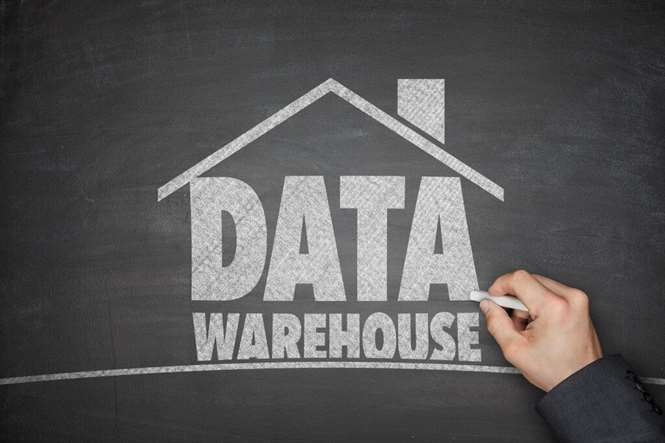In this analogy, the Scrum grasp is the sommelier, providing steering, context, and feedback all through the dash. Because a product backlog evolves, it’s simple to add new stories and items—or take away them—as new information arises. Changes in business requirements, market circumstances, or technology could cause changes in the Product Backlog. It repeatedly evolves because the product and the project surroundings evolves. Requirements of a project is never stop altering, so a Product Backlog serves as a residing Scrum artifact.

Following this guideline retains the backlog concise and ensures that the items likely to be implemented within the subsequent dash are ready. If the product planning horizon is over multiple launch cycles (typically six to 24 months) going past the present release cycle, work objects are “coarse-grain” as shown within the bottom grey colour region of Figure 1. These giant epics or tremendous epics require two or more launch cycles to complete. These super epics could additionally be described in plain English (bulleted text) or with display mock-up or video or prototype or with any type of expression suitable to express the intent and worth of super epics. These super epics are divided into feature-epics – sufficiently small to match in a single launch cycle – earlier than the release cycle by which that feature-epic shall be carried out. The concept is utilized throughout the product backlog refinement course of, which is a critical a half of backlog administration.
Develop The Initial Product Backlog
Agile finest practices recommend striving for a “DEEP product backlog,” where the objects slated for the near time period have probably the most detail, and the extent of detail decreases with priority. Managing the product backlog comes with several different responsibilities and tactics. As the product roadmap is updated usually, it must be closely linked to the product backlog.
So, the backlog needs to be prioritized (and re-prioritized) often to mirror adjustments and new findings. While a product owner deems the assorted product deficits insignificant to warrant delaying a product’s launch, a product backlog is indispensable in ongoing and planned product growth. In abstract, the DEEP backlog framework simplifies backlog management in agile projects. By maintaining things Detailed, Emergent, Estimated, and Prioritized, it promotes effectivity, collaboration, and adaptableness. It’s a valuable software for delivering outcomes that really matter in a dynamic Agile project. This implies that the order of the objects in the backlog issues since they will be developed on this order.
Typically, many of these work objects are epics; nevertheless, they need to be nonetheless sufficiently small to match in a release cycle and can be completed over two or extra sprints in a launch cycle. Feature-epics are divided into stories – small enough to slot in a dash – before the sprint during which a narrative shall be applied. The product backlog gadgets are detailed appropriately if higher-priority items are described in additional element than lower-priority ones. “The decrease the priority, the less element, until you’ll find a way to barely make out the backlog merchandise,” write Ken Schwaber and Mike Beedle in their book Agile Software Development with Scrum.
The Ultimate Guide To Consumer Story Mapping [2023 Guide]
At the end of the dash, a sprint evaluate is carried out with the stakeholders to higher perceive what to sort out subsequent. Backlog objects that weren’t completed could additionally be pushed again into the larger product backlog to get to at a later date or through the next sprint. Another sprint planning assembly will put together the staff to deal with the following batch of backlog objects. Although product backlog management is the responsibility of the Product Owner, the entire staff can participate in refinement.
Product homeowners ought to periodically conduct backlog grooming before every planning meeting. Specifically, it helps to double-check prioritization and to verify builders are implementing feedback. I use the technique of INVESTing in stories and SMART tasks just for the next sprint backlog, but not doing so at the release or product backlog levels. INVESTing in stories and duties over a longer time horizon will yield poor returns. You should rank product backlog objects in order of their direct significance to core business methods, e.g., product placement, entry into new/existing market, and so forth.
The prioritization of user stories is based on their impact on the system efficiency, lowering errors, and improving customer support, which helps the general targets of the project. The product backlog items—certainly the ones necessary to meet the product objective selected—should be estimated. The estimates may be coarse-grained and are sometimes expressed in story points or ideal days.
Story Points
It’s a poor use of time to add details to decrease precedence items because you never know the way the backlog is going to evolve. You could waste plenty of time detailing low-priority objects after they could be eliminated or revised later on within the course of. The refinement process adds particulars the place wanted and prioritizes gadgets based on the present info a product proprietor has from group members and stakeholders. Backlogs are in constant evolution, altering and adapting based mostly on the current wants of stakeholders and clients. To keep a backlog up-to-date and in its handiest type, it must be continuously refined and adapted. This process takes time, however there are easy, highly effective strategies for sustaining a high quality backlog.
- The Product Backlog lists all features, features, necessities, enhancements, and fixes that needs to be developed for the product launch.
- Maintaining the product backlog is the first accountability of the product owner or product manager.
- Over the time horizon of a number of launch cycles, INVESTing in stories has even poorer returns in comparison with INVESTing in tales for a single release cycle.
- INVESTing in stories and tasks over a longer time horizon will yield poor returns.
- It is a dynamic doc that is continuously up to date based on suggestions from stakeholders, changes out there, and new insights gained during the development course of.
Start with our pre-made template, making any changes you’d like to suit your particular wants. You can addContent different file sorts corresponding to documents, pictures, movies, and PDFs to store all the related information in one place. Product Marketing Manager at Digital.ai, tells her story of how a positive app expertise led to the conclusion that correct data integration is important to the entire software lifecycle. The Product Goal describes a future state of the product which may function a target for the Scrum Team to plan against.
Items that might be accomplished within the upcoming sprints (more urgent) must be better detailed, while objects scheduled for several sprints later can have fewer particulars. By following these methodologies, it’s potential to create an environment friendly and complete backlog with clear tales and well-defined tasks. This helps the development team work more effectively and ship a excessive quality product to users. To be certain that the product backlog is DEEP and stays that method, you must frequently update and refine it. Refining the product backlog is an ongoing, collaborative process that includes the product owner and team, as I describe in additional element in the publish Refining the Product Backlog. Backlog refinement isn’t a luxury task reserved for if you get an opportunity to tidy up.
The issues with the IT system are causing important disruptions to the enterprise. The IT group is beneath pressure to find a resolution shortly, however they’re struggling to establish the foundation cause product backlog deep of the problems. The company’s administration group is concerned about the influence on the business’s bottom line and is contemplating bringing in external consultants to help clear up the issues with the IT system.

In addition, most agile groups participate in backlog grooming classes to refine and order backlog items. During these classes, the team works together to prepare a couple of sprints price of person stories forward of time. Backlog grooming classes make certain that the consumer tales on the prime of the backlog comprise enough detail for the supply staff to understand them. Overall, the up to date product backlog aligns nicely with the DEEP ideas. Each person story is appropriately detailed, estimated, emergent, and prioritized, permitting the staff to successfully handle the product backlog and ship value to the business and its stakeholders.
A Product Backlog Item is estimated when the group has assigned it a value that represents its approximate measurement. This has resulted in long checkout lines, frustrated clients, and misplaced sales. Additionally, the system is susceptible to errors, leading to incorrect inventory information, which has led to stockouts and overstocking. As described within the Scrum Guide, the Product Backlog is an emergent, ordered record of what’s needed to improve the product.
In this text, we’ll discover the DEEP principles and their important role in numerous phases of the Agile process. From inception to dash execution and beyond, we’ll uncover how Detailed, Emergent, Estimated, and Prioritized Product Backlog objects drive Agile teams https://www.globalcloudteam.com/ towards flexibility, adaptability, and worth delivery. This means that the product backlog ought to have sufficient details to ensure clarity for execution but not overly detailed to save waste.
Release Planning Horizon, Work Merchandise Granularity, Estimation, And Rank Order
If a narrative needs to take not more than N/4 staff week of team effort (ex. 20 staff-hours for two-week sprints), all SMART tasks in a story should add up to not extra than N/4 workers week of staff effort. If you have five tasks, each task on a mean should take 4 hours of best time effort or less. A product backlog may have a number of hundred or more work gadgets, hence the acronym DEEP. DEEP can also be an fascinating acronym, capturing the essence of the logical construction of a product backlog. The key characteristics of a well-organized and managed product backlog are summarized in the picture beneath.
Keeping your customers embedded in your course of will allow you to make refinement choices which are in the most effective curiosity of the customer, no matter what section of growth you’re in. The Product Backlog is a critical element of Agile product improvement. It is a residing document that lists all options, capabilities, requirements, enhancements, and fixes that must be developed for the product release. Effective Product Backlog Management is important to make sure that the product meets the needs of its users and stakeholders. The DEEP framework is a set of guidelines that may help teams handle the Product Backlog successfully.